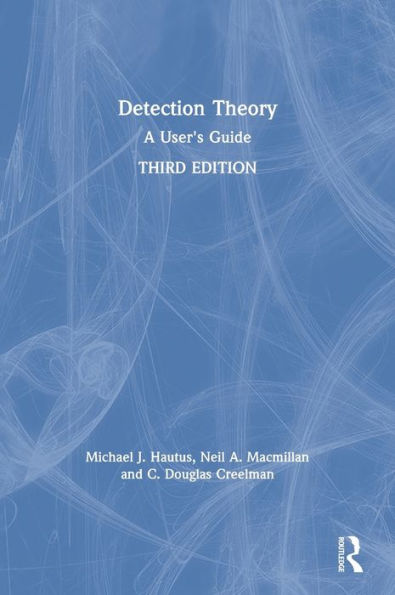"The second edition of Detection Theory has been my invaluable companion for many years. It has always been in easy reach to answer my questions. Now that book will move to a place of honored retirement as I call on this new and improved third edition to guide me." — Jeremy Wolfe, Brigham and Women’s Hospital & Harvard Medical School, USA
"The great value of signal detection theory is that it protects you from the dangerous intuitions you will almost certainly otherwise have. After these erroneous intuitions are used to interpret data or build a theory, they will eventually be corrected by someone who knows the difference between d′ and β. It would be better to avoid that fate, and the best way to do that is to carefully study this comprehensive handbook." — John Wixted, University of California, San Diego, USA
"Signal detection theory was developed in the context of research in sensory psychology, but its impact quickly spread to many other areas, in part because the two previous editions of this book provided such a clear explanation of the theory along with a review of its many applications. This third edition of Detection Theory: A User’s Guide has been thoroughly updated and will continue to be an invaluable reference and textbook." — Walt Jesteadt, Boys Town National Research Hospital, USA
"More than anything else, this book has served as a signpost for my research career. It’s that powerful; the tools that general." — Caren Rotello, University of Massachusetts, Amherst, USA
"The second edition of Detection Theory has been my invaluable companion for many years. It has always been in easy reach to answer my questions. Now that book will move to a place of honored retirement as I call on this new and improved third edition to guide me."
Jeremy Wolfe, Brigham and Women’s Hospital & Harvard Medical School, USA
"The great value of signal detection theory is that it protects you from the dangerous intuitions you will almost certainly otherwise have. After these erroneous intuitions are used to interpret data or build a theory, they will eventually be corrected by someone who knows the difference between d′ and β. It would be better to avoid that fate, and the best way to do that is to carefully study this comprehensive handbook."
John Wixted, University of California, San Diego, USA
"Signal detection theory was developed in the context of research in sensory psychology, but its impact quickly spread to many other areas, in part because the two previous editions of this book provided such a clear explanation of the theory along with a review of its many applications. This third edition of Detection Theory: A User’s Guide has been thoroughly updated and will continue to be an invaluable reference and textbook."
Walt Jesteadt, Boys Town National Research Hospital, USA
"More than anything else, this book has served as a signpost for my research career. It’s that powerful; the tools that general."
Caren Rotello, University of Massachusetts, Amherst, USA






